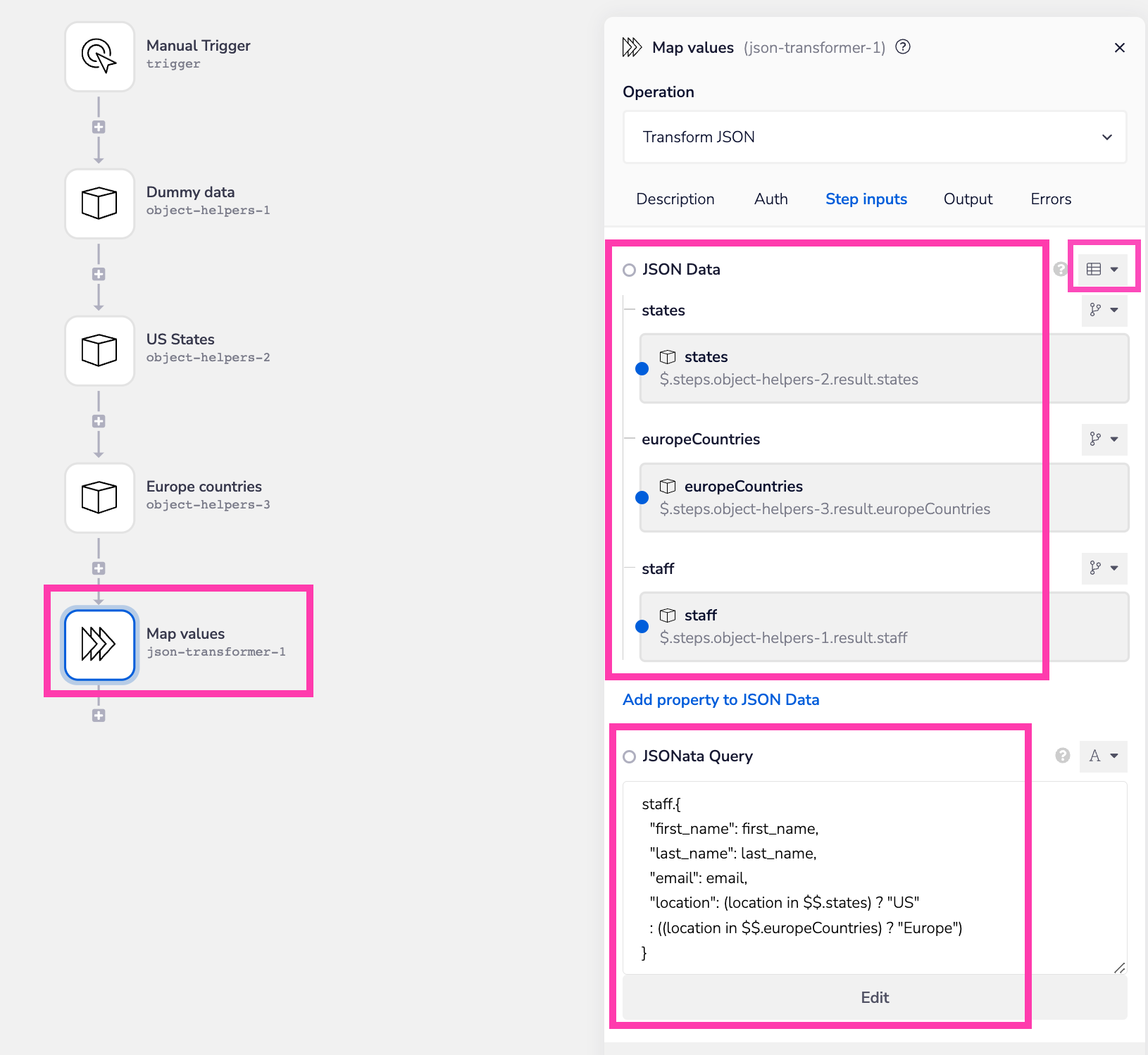JSON Transformer
JSON Transformer transforms JSON using the JSONata query language
Overview
The main purpose of the JSON Transformer is to transform JSON data using the JSONata query language.
The connector uses JSONata version 1.8.6.
Introduction to the JSONata language
This page is primarily an introduction to the basics of the JSONata query language. Please also see our Data Transformation Guide which features a growing list of use-case based examples of putting JSONata to work.
The JSON Transformer Connector is an implementation of the JSONata library. This powerful tool allows you to take JSON data and do many things including:
- Reformatting / restructuring JSON
- Querying JSON for values
- Applying calculations to JSON data
- Even writing your own functions in JSONata! The documentation for JSONata is extensive and worth reviewing - at minimum, we recommend watching the 5 minute demonstration video. Below we will provide a gradual and simplified introduction to JSONata using a variety of examples with data you might see in Tray.
JSONata Sandbox
These examples will be linked in a test / demo site (try.jsonata.org) which is highly recommended when testing and troubleshooting your queries.
You can set the connector version on the exerciser before writing your code.
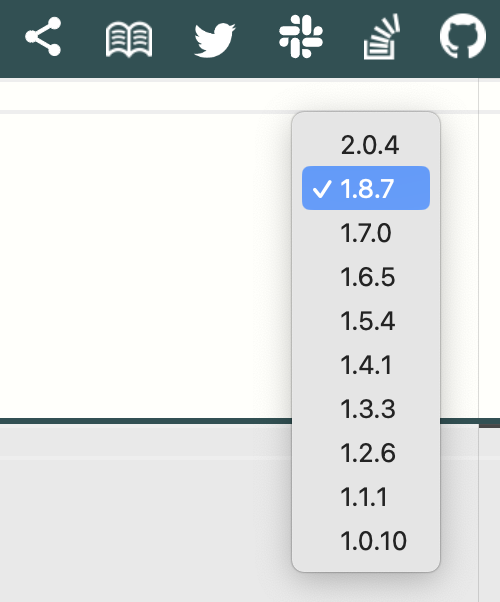 Once you are happy with the result on the exerciser, you can move the code to the Tray workflow.
Once you are happy with the result on the exerciser, you can move the code to the Tray workflow.
Be sure when working with data from a Tray workflow that you copy / paste the output data log of the step containing the JSON you want to work with. Tray logs data can vary a bit from what you would get in other tools (usually adding a key of “data” or “result” at the top level of the object)
Extracting data
Walkthrough
We can start working with the following dataset of books:
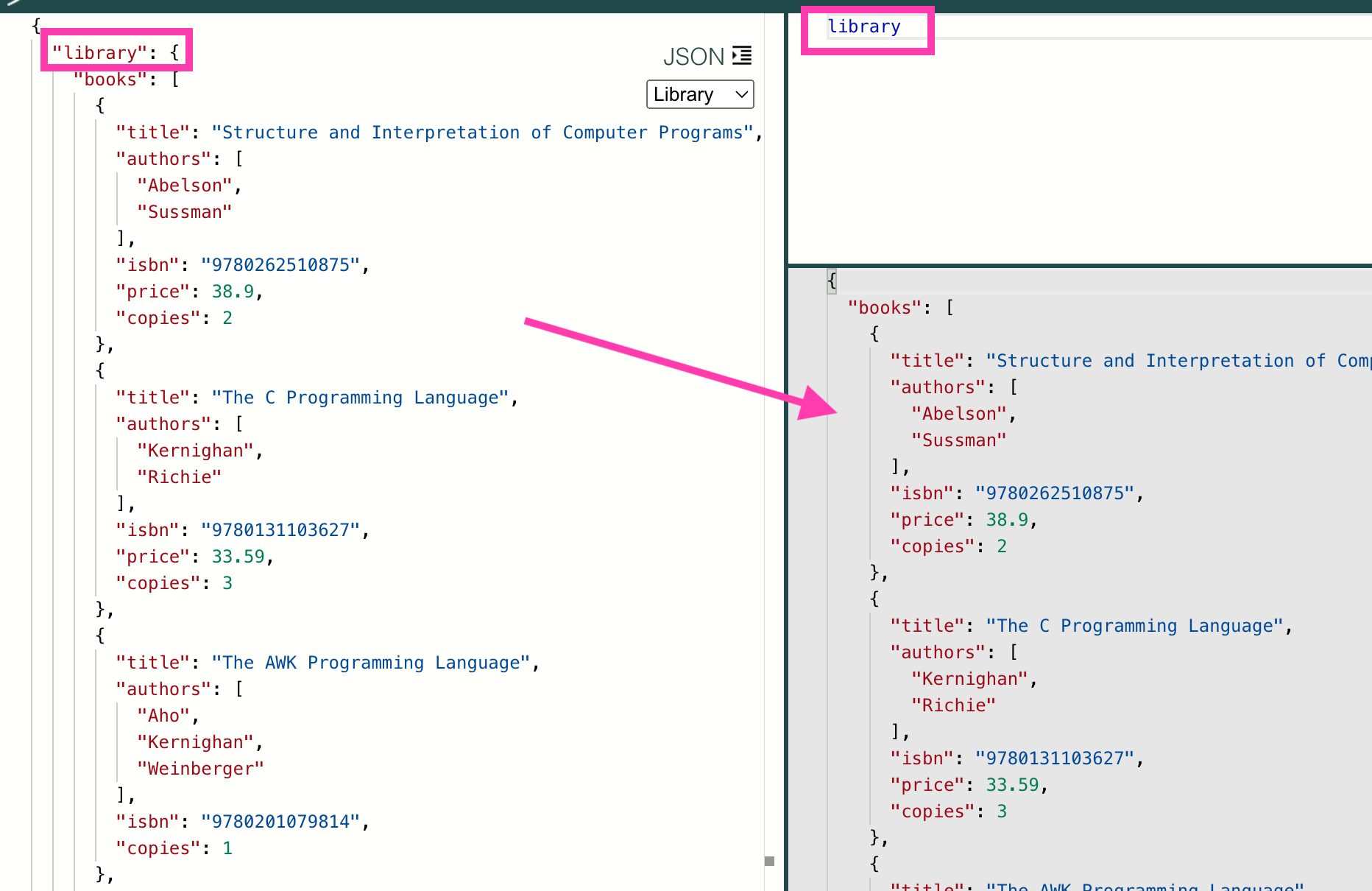 Query link here
If we begin our query with
Query link here
If we begin our query with library, you will see that:
- It matches the** key name at the top level **of the object
- So returns everything in the 'library' value
- This is an object itself, containing 'books'
- 'books' is an array of objects representing each book.
Structuring output
More information about filtering and structuring data
Forcing a nested array
There is a known bug within JSONata which will can cause errors if you are trying to nest a single array within an array. You will need to add a pair of square brackets [] at the end of your query to mitigate this.
The sample code below forces a single JSONata item into a nested array. Here is the code within the JSONata Exerciser itself for a closer look.
list.[\{"key": "ContactId", "value": contact.Id\},\{"key": "CampaignId", "value": "7014V0000025zX5QAI"\}][]
Operators
JSONata has a list of simple operators which allow you to combine data and run simple comparisons. Here we will take you through some examples of putting operators to use, and provide links to the full list of operators in the JSONata documentation.
Functions
JSONata also has a list of functions, which are more complex and powerful than operators.
They are in the format of $function()
Where 'arguments' must be passed inside the ()
For example in $length("Hello World") it is "Hello World" that is being passed as the argument.
This gives the answer of '11' as there are 11 characters in "Hello World" (including the space).
Best practices and tips
Chaining queries
The ~> operator is a very useful way of simplifying your queries.
If you want to make use of more than one function or operation it can allow you to pass the result of one as the input for the next.
Creating variables
Variables are useful whenever you want to store some piece of information and require it further down in your query.
Variables begin with $ and are assigned using :=
$name := customer.name
$age := customer.age
Defining your own functions
If your queries are getting too involved even for chaining, you can define your own functions.
This will make your queries more readable and easy to structure.
Defining functions is done by naming and declaring the function in the following format:
$functionName := ``**function**``(<required variables>){<build function using required variables>}
Note the use of ( ) to set the required variables and { } to build the function itself.
Accessing arrays / objects with no name
If you have a payload which presents just a simple array, you can access this using the $$ root variable:
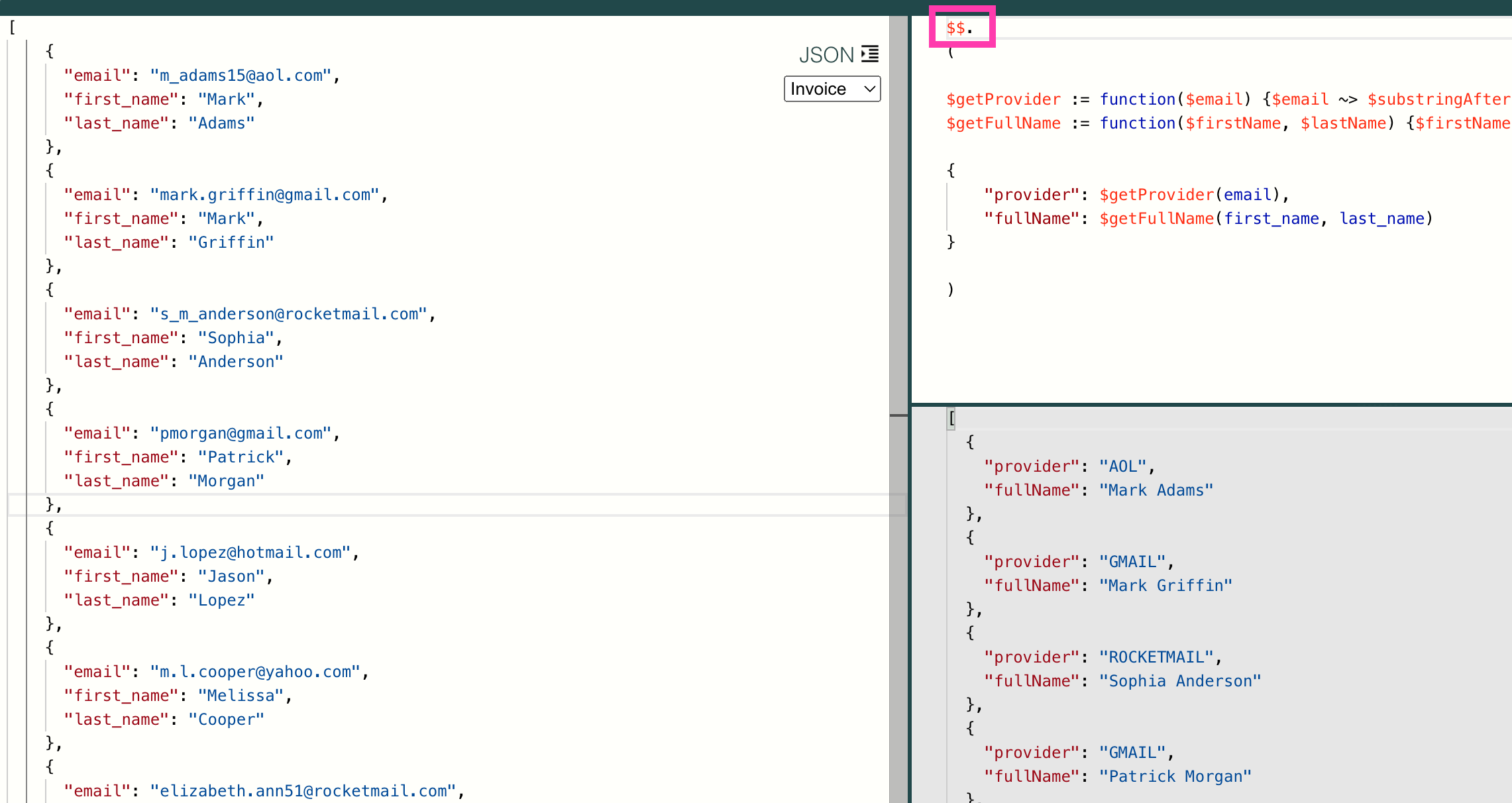 Please see the section on the built-in variables in the Stedi cheatsheet for more info.
Please see the section on the built-in variables in the Stedi cheatsheet for more info.
Notes on using the JSON Transformer
When using the JSON Transformer in your workflows, you can use the connector snake to set the input data for the JSONata query:
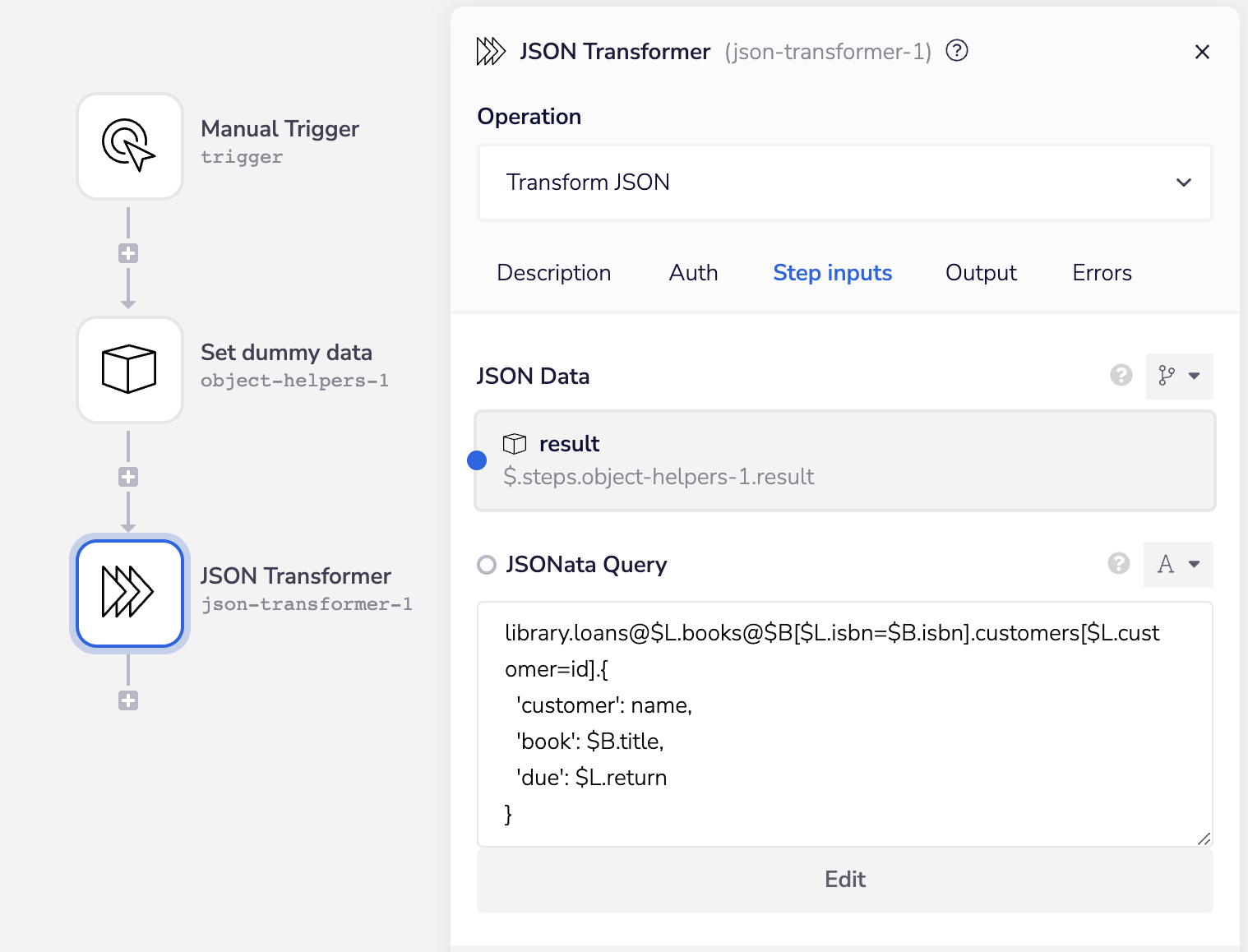 You can also set this to an object and use multiple datasets for your query to reference:
You can also set this to an object and use multiple datasets for your query to reference:
